StepsApp
Walking and taking steps could be seen as boring. It’s something we do every day, without thinking about it. At conferences we can easily take 20,000 steps a day, when we’re standing for the entire day, with barely any opportunities, or need to sit, except when eating or getting from A to B. The Steps App is a way of seeing step counts in a variety of ways.
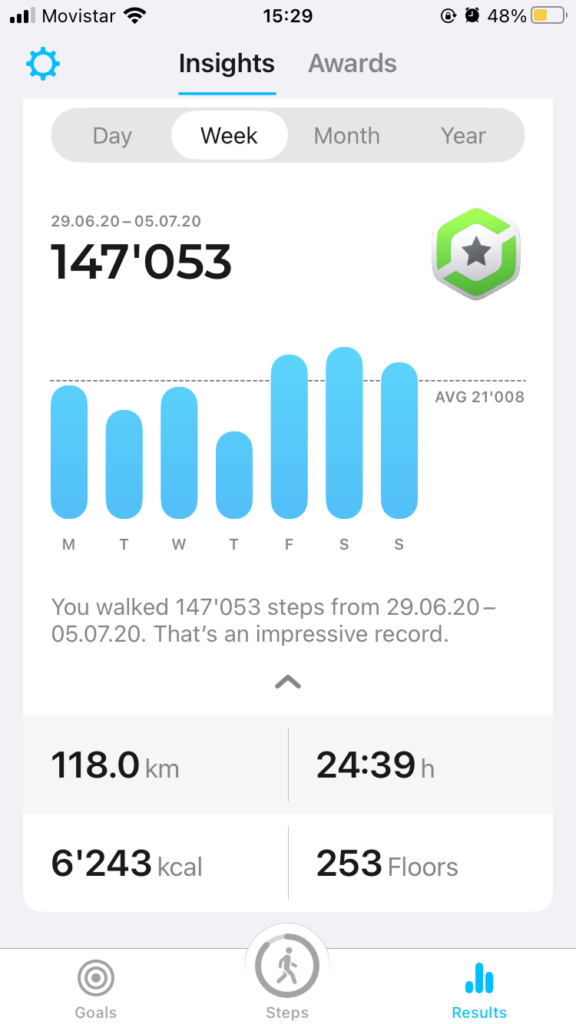
With the insights tab you have information about your best week, month and year. It shows you theoretical distance, time spent stepping, theoretical energy burn, and floors climbed, with compatible devices. On my best week I climbed 253 floors, walked 118 km over 24hrs 39 mins and burned 6243 kcals. My best step day was on the 23rd of August 2018. I took 40,142 steps. That was a theoretical 31.3km over 6hrs 45 and 188 floors.

During my best month I walked half a million steps. 453.7km over 90hrs20, climbing 655 floors. This was my walking habit during the pandemic and the reason for such a lot of time walking wasn’t because I was doing anything interesting. It’s because we were in self-isolation and I was using the Apple Watch calories burned per day to indicate how much exercise I should do. The result is a month where I walked for three hours a day for an entire month. One could argue that this isn’t such a good memory.
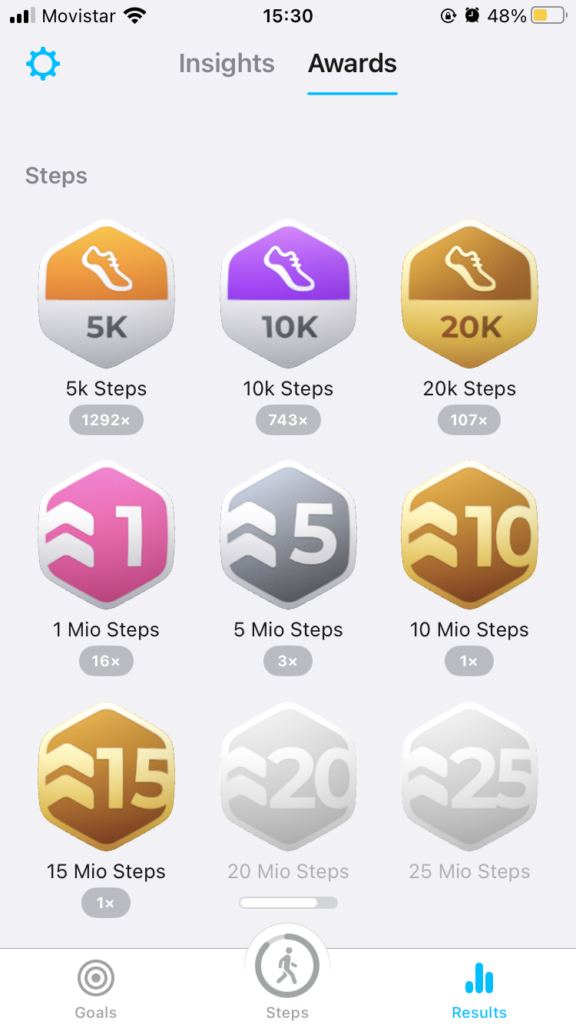
It’s more fun to look at the pages above. I have walked a million steps 16 times, five million, three times. I have walked at least 5000 steps 1292 times and 10,000 steps 743 times so far. This is fun because it shows how consistent my walking habit is, and how regularly I reach each goal/landmark.
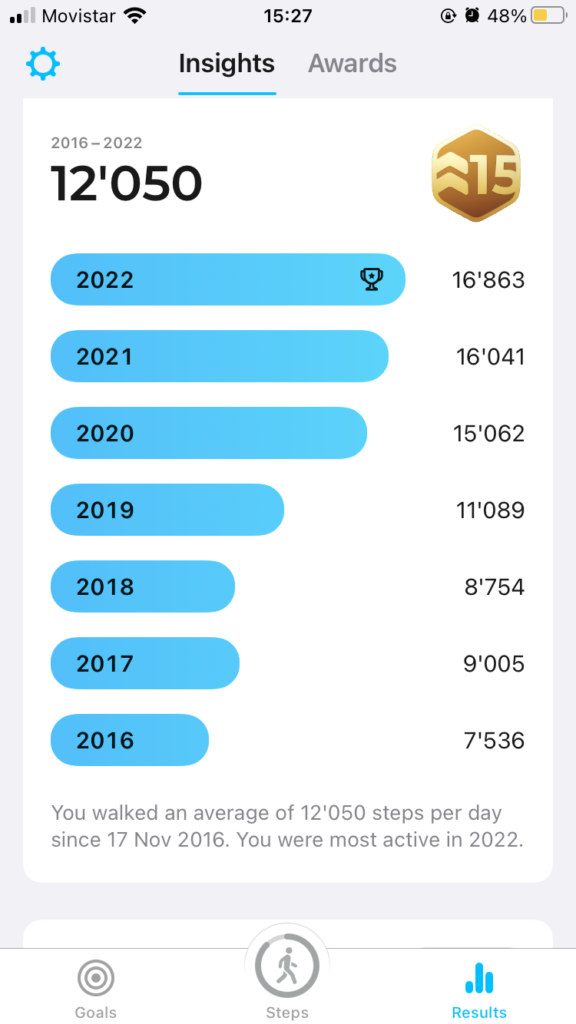
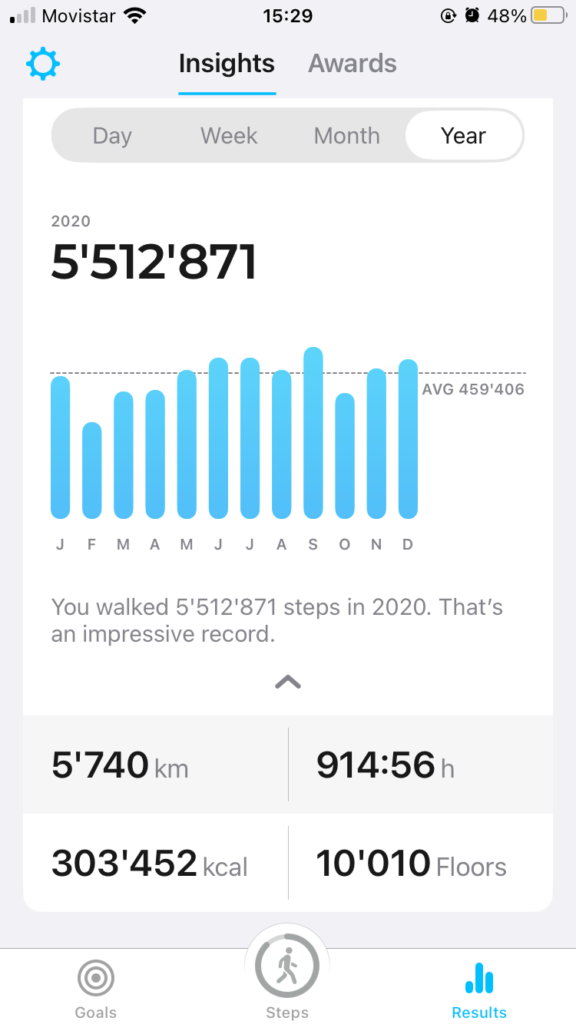
And Finally
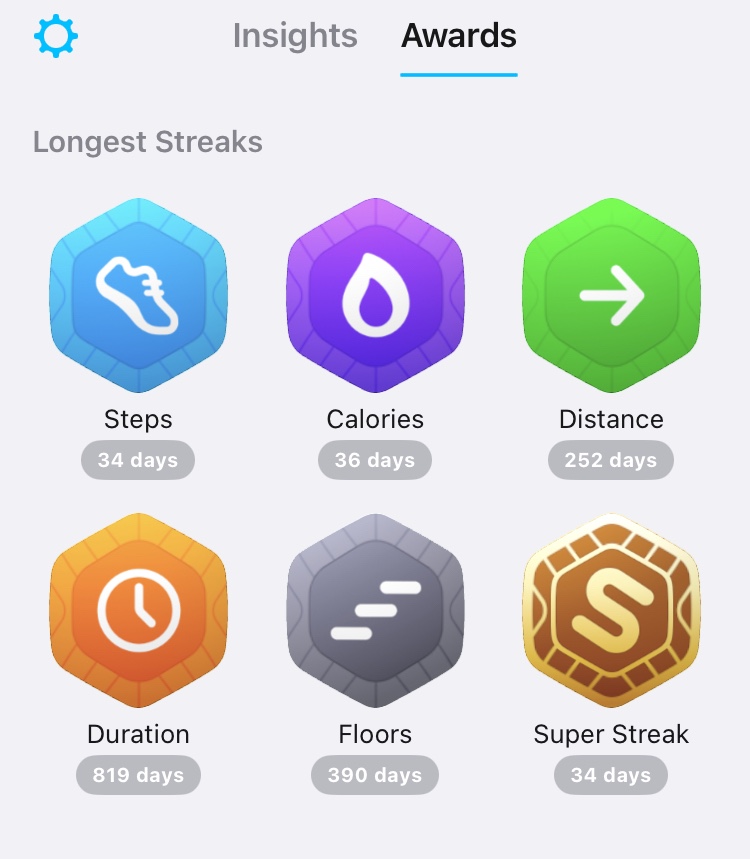
They allow you to see your longest steps, calories, distance, duration, floors and superstreak. These are both excellent and crap. Step streaks are good when you’re walking but doing no other sports. If you cycle, climb or do other sports there is a good chance that you will your streak., That’s why the steps streak is just 34 days but the distance streak is 252 days and the duration streak is 918 days, and floors is 390. If you limit yourself to steps then you can only take steps, and nothing else.

